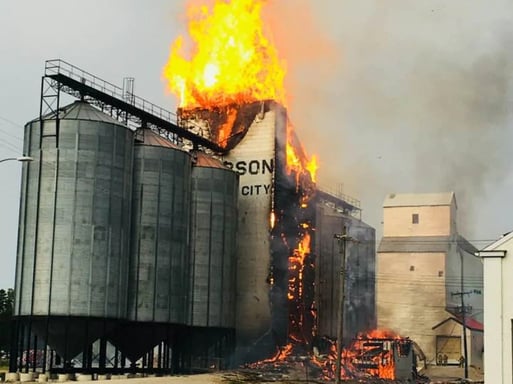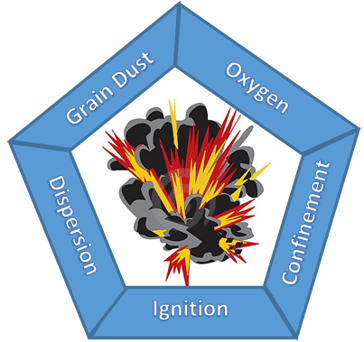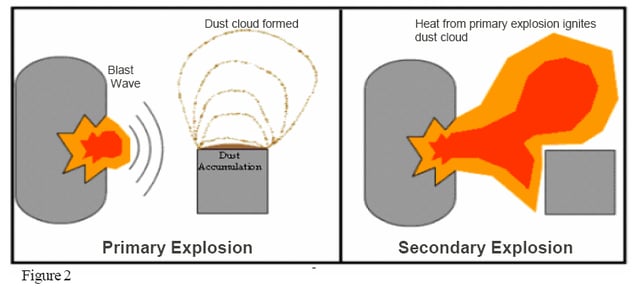Over the last ten years, grain dust explosions have occurred at an average of 10 explosions per year. You might look at that number and think that grain dust explosions aren't something you need to worry about. However, the magnitude of these explosions can be devastating. These explosions can bring down entire operations, causing injuries and even fatalities. But with prevention, grain dust explosions can be avoided.



Grain Elevator – Blast Caught on Camera
On Farm Grain Bin Collapse and Grain Dust Explosion
Preventing Grain Dust Explosions
Proactive prevention is the best defense against an explosion. Develop and implement a plan that includes cleaning, sanitation, and regularly scheduled maintenance. There should be a continuous effort to reduce and remove grain dust in all work areas. Leg boots should be cleaned regularly to remove excess dust and kernels. According to OSHA Standard Requirements, fugitive dust must be removed when accumulations exceed 1/8”.
The two most important factors in preventing an explosion are keeping the facilities clean to minimize the fuel source and keeping the equipment in good working order to minimize the chance for ignition.
Train your employees as a first line of defense. When they're armed with information and training on combustible dust hazards, they can be instrumental in recognizing unsafe conditions, take preventative action, or alerting their supervisors or management.
- Developing and implementing a routine lubrication plan for bearings on the basis of the manufacturer’s recommendations
- Developing and implementing a standard operating procedure (SOP) for housekeeping practices to minimize grain dust accumulation
- Using a food-grade mineral spray on grain that is being transferred
- Installing a bearing-temperature monitor in strategic locations throughout the grain handling system and implementing a program to periodically monitor bearing temperature
- Installing belt-rub sensors inside bucket-elevator leg casings
- Substituting steel cups with plastic cups in elevator legs
- Using anti-static belting material in legs and horizontal belt conveyors
- Establishing easy-to-open clean out doors in the leg-boot side panel for easy removal of grain and dust
- Installing dust aspiration systems or a ventilation system at grain transfer points
- Training employees in safe work practices so that they can recognize and prevent hazards that could lead to a grain dust explosion
- Posting No Smoking signs and actively enforcing the rule
- Completing regularly scheduled inspections to locate any defective wiring or sparking and make repairs as needed
Preventive recommendations from Oklahoma State University.
Stay Alert
Kingsly Ambrose, an assistant professor of agricultural and biological engineering at Purdue University says, “I always tell people to keep their eyes, nose and ears open - if you see something strange, hear an odd noise or smell something unusual, then that’s the time to shut down and check all the equipment." When it comes to minimizing the fuel source he also says, “It’s not about completing a one-day maintenance and thinking you’re done for the year. It’s a constant, ongoing process.”
In Summary
Take time to view the videos attached here. Though many people have not experienced a grain dust explosion, these videos can demonstrate the force and magnitude an explosion has. Educate your employees on how grain dust explosions occur and train them to be proactive in prevention. Controlling dust and reducing sources of ignition are key to keeping people and your facilities safe.



